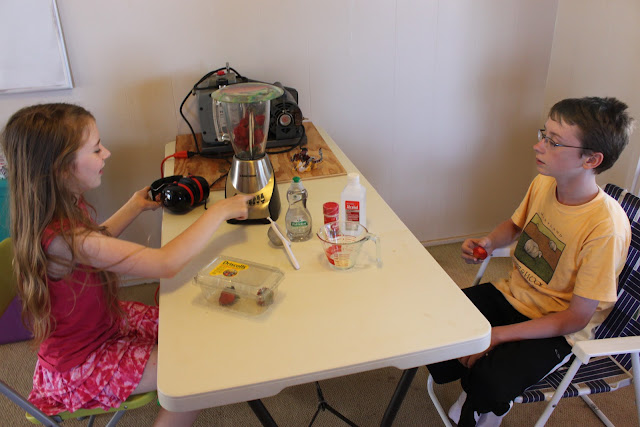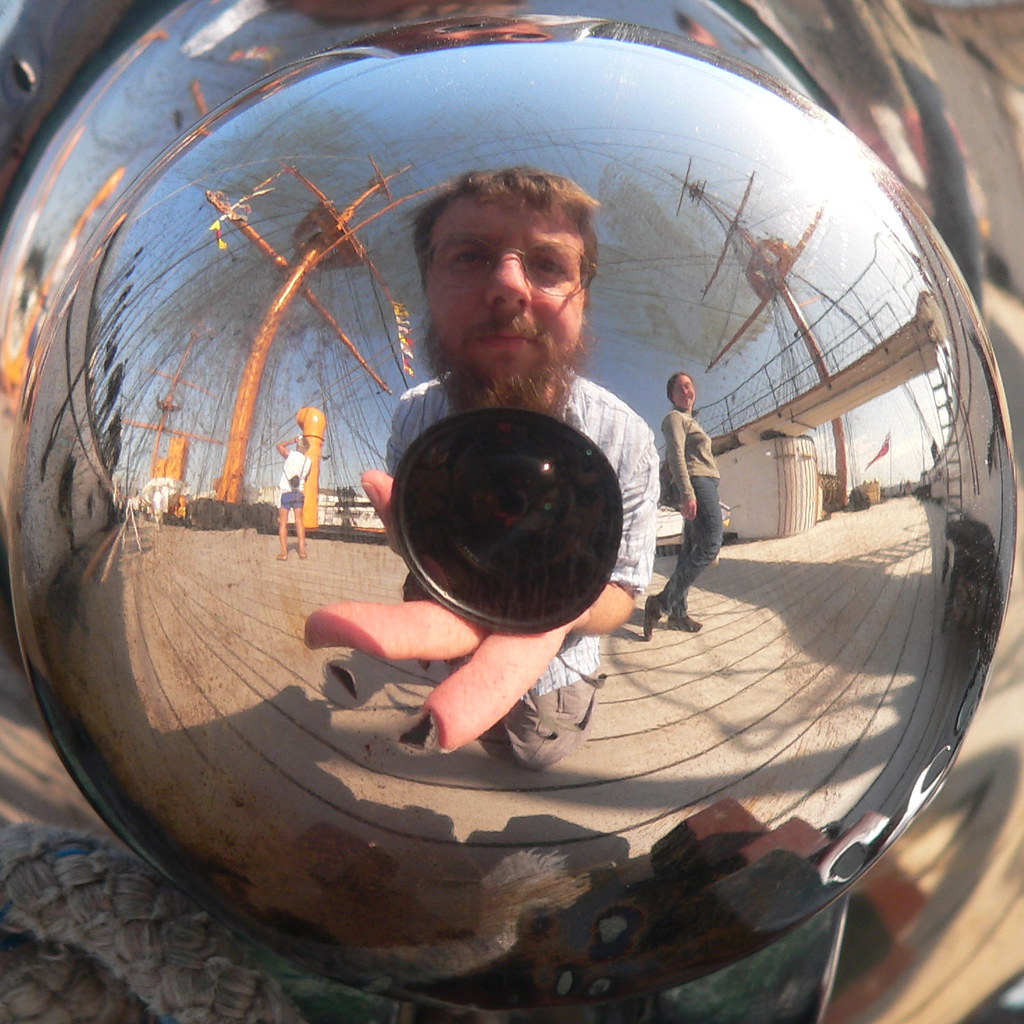In another project, we tried extracting DNA from strawberries using household materials. We had to work quickly because the strawberries were fast disappearing!
First we blended the strawberries in a blender.
Then we added some dishwashing soap to disrupt the cell membranes.
Then some meat tenderizer to break down the proteins. In the picture below I was describing the cell membranes, the proteins that chop up DNA, and proteins that are attached to the DNA, on the whiteboard to explain to T and M why we were doing this.
Then we poured the slurry through a strainer.
Then we mixed rubbing (isopropyl) alcohol in the solution and white clumps of DNA appeared as it came out of solution between the alcohol and the water layer.
We tried spooling the DNA out but it was a gross mess.
In retrospect I think I shouldn't have used the blender on the strawberries. It probably sheared the DNA molecules too much so they wouldn't string together well--we should have been gentler. A single DNA molecule can be over an inch long! The average spacing between "letters" in a strand of DNA is 3.4 ångstrom, which is 10^(-10) meter. There are 6.6 billion of these ATCG basepair letters in the human genome, which works out to a combined length of 2.2 meters of DNA per cell (how does it all fit?). Dividing this by 46 chromosomes gives an average of 1.9 inches (4.8 cm) per single DNA molecule.
An even more amazing number comes from considering how much DNA is packed into your body. Humans are made up of 10 trillion cells. Which works out to a total of 22 billion kilometers of DNA per person if it was stretched out end to end. This is more than twice the diameter of the orbit of Neptune around the sun!
To carry this a step further, there are 7 billion humans on the planet right now. The combined existing human DNA is a length of 1.54 x 10^(20) kilometers, or 154 quintillion kilometers, or 100 million light years (if my math is not off--a light year is about a trillion kilometers). This is about twice the distance to the Virgo Galaxy Cluster!
Subscribe to:
Post Comments (Atom)








No comments:
Post a Comment